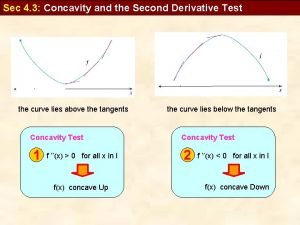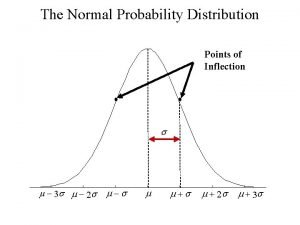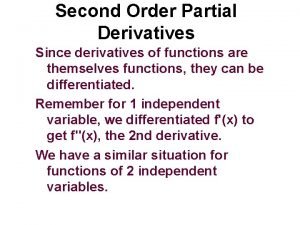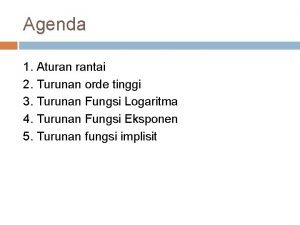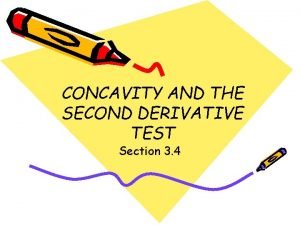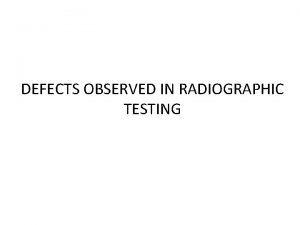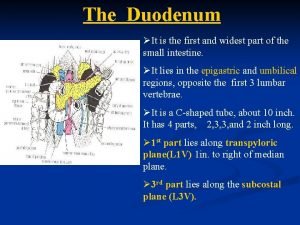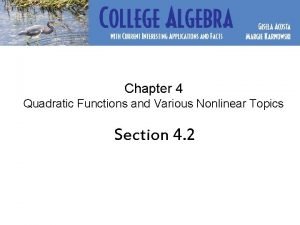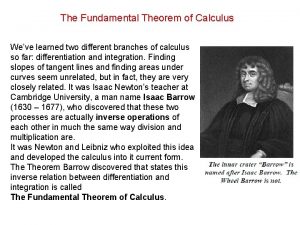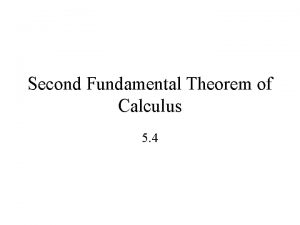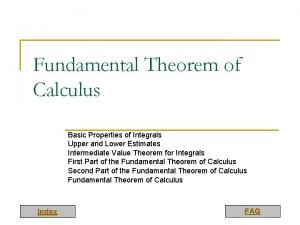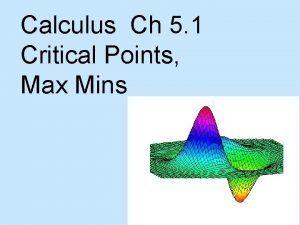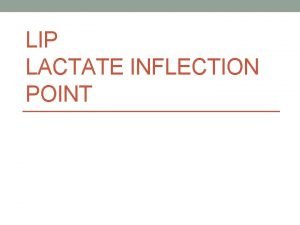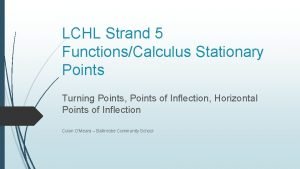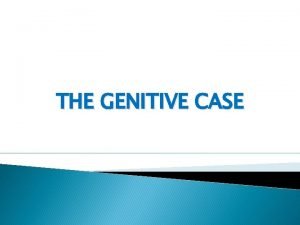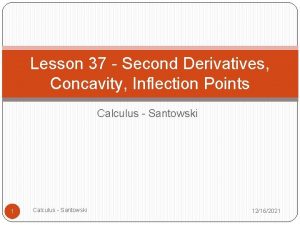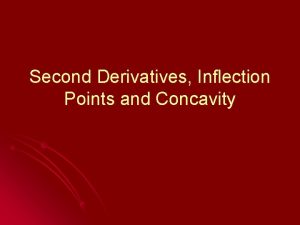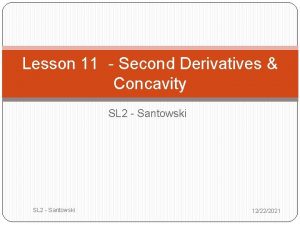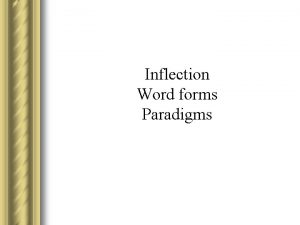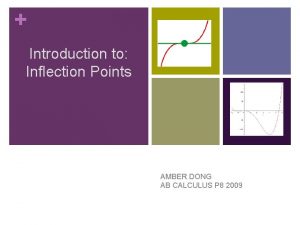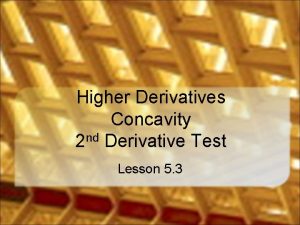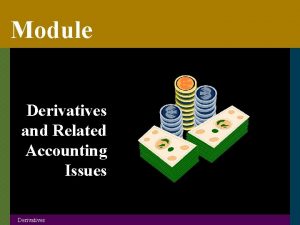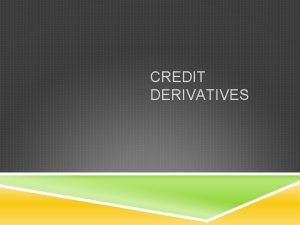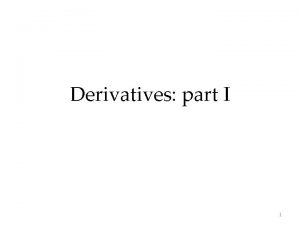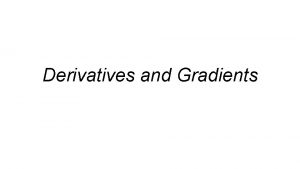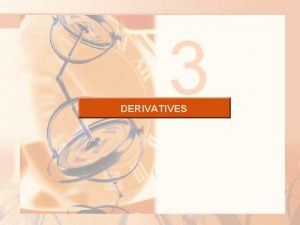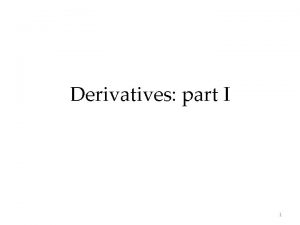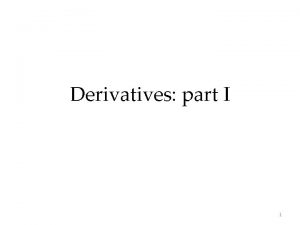Lesson 37 Second Derivatives Concavity Inflection Points Calculus





















- Slides: 21

Lesson 37 - Second Derivatives, Concavity, Inflection Points Calculus - Santowski 1 Calculus - Santowski 9/17/2020

Lesson Objectives 1. Calculate second derivatives of functions 2. Define concavity and inflection point 3. Test for concavity in a function using the second derivative 4. Apply concepts of concavity, second derivatives, inflection points to a real world problem 2 Calculus - Santowski 9/17/2020

(B) New Term – Concave Up Concavity is best “defined” with graphs (i) “concave up” means in simple terms that the “direction of opening” is upward or the curve is “cupped upward” An alternative way to describe it is to visualize where you would draw the tangent lines you would Calculus - Santowski 3 have to draw the tangent 9/17/2020

(B) New Term – Concave down Concavity is best “defined” with graphs (ii) “concave down” means in simple terms that the “direction of opening” is downward or the curve is “cupped downward” An alternative way to describe it is to visualize where you would draw the tangent lines you would have to draw the tangent Calculus Santowski 4 lines “above” the curve 9/17/2020

(B) New Term – Concavity In keeping with the idea of concavity and the drawn tangent lines, if a curve is concave up and we were to draw a number of tangent lines and determine their slopes, we would see that the values of the tangent slopes increases (become more positive) as our x-value at which we drew the tangent slopes increase This idea of the “increase of the tangent 5 slope is illustrated on the next slides: Calculus - Santowski 9/17/2020

(B) New Term – Concavity 6 Calculus - Santowski 9/17/2020

(C) Calculus & Concavity If f ``(x) > 0, then f(x) is concave up If f ``(x) < 0, then f(x) is concave down If f ``(x) = 0, then f(x) is neither concave nor concave down The second derivative also gives information about the “extreme points” or “critical points” or max/mins on the original function (Second Derivative Test): If f `(x) = 0 and f ``(x) > 0, then the critical 7 point is a minimum point (picture y = x 2 at x = 0) If f `(x) = 0 and f ``(x) < 0, then the critical 2 at x point is a maximum point (picture y = -x Calculus - Santowski 9/17/2020 = 0)

(C) Calculus & Concavity The first derivative also tells us information about the concavity of a function f(x) If f `(x) is increasing on an interval (a, b), then f(x) is concave up on that interval (a, b) If f `(x) is decreasing on an interval (a, b), then f(x) is concave down on that interval (a, b) 8 Calculus - Santowski 9/17/2020

(D) Inflection Points & Calculus Let f(x) be a differentiable function on an interval (a, b). A point x = a is called an inflection point if the function is continuous at the point and the concavity of the graph changes at that point. Using Calculus, the IP can by either 9 f’’(a) = 0 or f”(a) does not exist. However, if f”(a) = 0, we should still test on- either side of x = a to see IF the 9/17/2020 Calculus Santowski concavity changes

(E) Example (CI) Ex 1. Find where the curve y = 4 x 3 – 3 x 2 + 1 is concave up and concave down and determine the co-ordinates of the inflection point(s). Then use this info to sketch the curve Ex 2. Find where the curve y = x 4 – 4 x 3 10 + 5 is concave up and concave down and determine the co-ordinates of the inflection point(s). Then use this info to sketch the curve Calculus - Santowski 9/17/2020

(E) Example Ex 3. Determine the intervals of concavity and inflection points of f(x) = 3 x 5 – 5 x 3 + 3. For this question, you will solve graphically and then verify algebraically 11 Calculus - Santowski 9/17/2020

(G) In Class Examples Ex 5. For the following functions, find the intervals of concavity and inflection point(s) 12 Calculus - Santowski 9/17/2020

Determining Concavity 13 Calculus - Santowski 9/17/2020

Determining Concavity 14 Calculus - Santowski 9/17/2020

(F) Inflection Points & BUT…… For the following functions algebraically determine, then graphically verify: (i) y’’(x) (ii) where the inflection points are (iii) what their intervals of concavity are 15 Calculus - Santowski 9/17/2020

(F) Inflection Points & BUT…. 9/17/2020 Calculus - Santowski 16

(F) Inflection Points & BUT…… Conclusions: (a) if f’’(a) = 0, then x = a may still NOT be an inflection point (b, c) if g’(a) or h’(a) do not exist, concavity may still change at x = a (d) concavity may change at an x value which is not in the domain of k(x) 17 Calculus - Santowski 9/17/2020

(E) Example (CA – homescreen only) Ex 4. For the function find (a) intervals of increase and decrease, (b) local max/min (c) intervals of concavity, (d) inflection point, (e) sketch the graph Verify graph using TI-84 graphing 18 features Calculus - Santowski 9/17/2020

Second Derivative Test Using the Second Derivative Test to find relative max or mins Find the relative extrema of P(x) = x 3 + x 2 –x+1 Find the relative extrema of f(x) = -3 x 5 + 5 x 3 19 Calculus - Santowski 9/17/2020

Using the Second Derivative Test to find relative max or mins Find the relative extrema of f(x) = -3 x 5 + 5 x 3 Find critical numbers first (what makes first derivative = 0) So critical numbers are Using f “(x) = -60 x 3 + 30 x, apply 2 nd Derivative test. 20 Point on f(x) (-1, -2) (1, 2) (0, 0) Sign of f”(x) f ” (-1) > 0 f “(1) < 0 f “(0) = 0 Conclusion Concave up so relative min Concave down so relative max Test fails Calculus - Santowski 9/17/2020

Internet Links Second Derivatives from P. Dawkins at Lamar U Algebra Lab - Second Derivatives & Concavities From Monterey Institute for Technology & Education On-line Quiz for Fcns & their derivatives On-line Quiz #2 for Fcns & their derivatives On-line Quiz for Fcns & their derivatives 21 Calculus - Santowski 9/17/2020
 Concavity test
Concavity test Normal curve inflection points
Normal curve inflection points Differentiation of cosx
Differentiation of cosx Find partial derivative
Find partial derivative Contoh aturan rantai
Contoh aturan rantai Welding defects distortion
Welding defects distortion Test for concavity
Test for concavity Internal undercut radiograph
Internal undercut radiograph Concavity of duodenum
Concavity of duodenum Parabola concave
Parabola concave Average rate of change with integrals
Average rate of change with integrals What is the second fundamental theorem of calculus
What is the second fundamental theorem of calculus Second fundamental theorem
Second fundamental theorem Calculus critical points
Calculus critical points What is lactate inflection point
What is lactate inflection point Inflection linguistics
Inflection linguistics Types of turning points
Types of turning points Inflection
Inflection Is microphone a common or proper noun
Is microphone a common or proper noun 186 282 miles per second into meters per second
186 282 miles per second into meters per second Brand positioning bulls eye
Brand positioning bulls eye Points of parity and points of difference
Points of parity and points of difference
